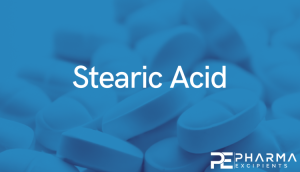Exploring Applications of Plant-Derived Polymers in Fused Deposition Modeling of Oral Pharmaceutical Tablets

Introduction
Additive manufacturing or 3D printing technology refers to the fabrication of three-dimensional objects from computer-aided designs (CAD) by adding layers of material on top of each other successively. In oral pharmacotherapy, this technology presents a paradigm shift from the current “one size fits all” approach. The 3D printing technology will allow the manufacture of solid dosage forms with different dose strengths, combinations of different medicaments or drug release profiles. To achieve these properties, the 3D printing technology will work by altering the size, shape and fill level of the tablet directly, which cannot be attained easily with conventional manufacturing methods. Fused deposition modeling (FDM) is one of the most investigated 3D printing technologies for oral tablets. While synthetic oil-based materials such as polyvinylpyrrolidone, polyvinyl alcohol, and polylactic acid are commonly employed in FDM formulations, there is currently limited information on the applicability of safer and more sustainable plant-based alternatives. The purpose of this study was to evaluate the suitability of modified starches in 3D printing of immediate and controlled release tablets containing a model active pharmaceutical ingredient (API) via FDM technology.
Objectives
The aim of this study was to evaluate the suitability of modified starches in 3D printing of tablets containing different model active pharmaceutical ingredient (API) via FDM technology.
Continue reading here for results and conclusion
Materials and Methods
Diprophylline was used as the primary model API. Prior to FDM printing of the tablets, filaments were prepared via hot melt extrusion (HME) using a twin-screw extruder fitted with a 2.6 mm die orifice. NEOSORB® P 100 C sorbitol and PEARLITOL® 100 SD mannitol were included as plasticizers in the formulations while stearic acid was utilized as lubricant. LYCOAT® RS 720 pregelatinized hydroxypropyl pea starch was used as the polymer matrix in Formulation 1 (F1) while a combination of PREGEFLO® PI 10 pregelatinized potato starch and hydroxypropyl methylcellulose (HPMC K4M) were used in Formulation 2 (F2) to achieve immediate release and controlled release profile respectively with diprophylline. F2 was found to be suitable for a wider range of APIs namely theophylline anhydrous, caffeine anhydrous, and indomethacin in both extrudability and printability and hence were subsequently printed to match their daily dosage of 125 mg, 100 mg, and 75 mg respectively. Critical HME process parameters such as screw speed and barrel temperature were pre-set as detailed in table 1.
Continue reading here for results and conclusion
Source: Roquette website Exploring Applications of Plant-Derived Polymers in Fused Deposition Modeling of Oral Pharmaceutical Tablets (roquette.com), Keat Theng Chow, Hui Ping Goh, Yuan Siang Lui, Nicholas Chua, Olaf Haeusler, Antoine Billa, Marie Albert, Presented at the AAPS 2023 PharmSci 360, October 22-25, 2023, Orlando, Florida
Read also our introduction article on Stearic Acid here:


